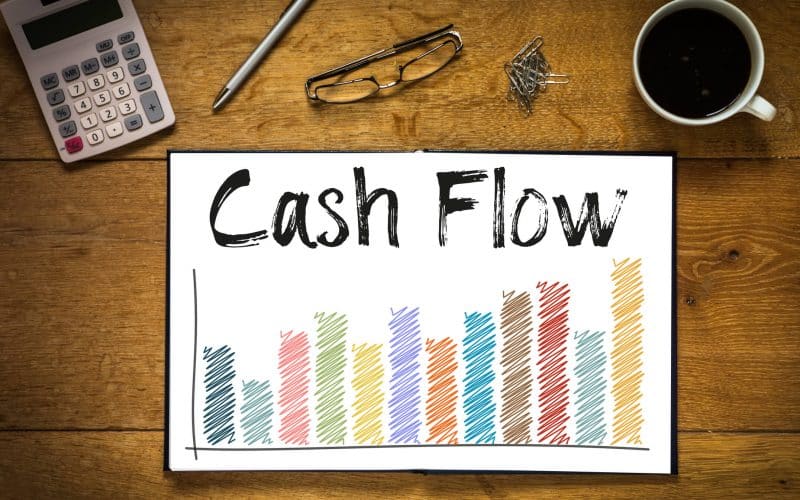What is the Indirect Method?
One of two accounting techniques that help to produce a cash flow statement is the indirect method. Basically, the indirect method converts the operating portion of the cash flow statement from accrual to cash accounting. This is by increasing and decreasing balance sheet line items.
The direct method is the other choice for completing a cash flow statement. This method lists actual cash inflows and outflows made during the reporting period.
However, in the course of this post, we will only go through the indirect method. Meanwhile, you can go through our post on the direct method for more details on the former.
Understanding the Indirect Method of Preparing a Cash Flow Statement
The cash flow statement focuses on a company’s cash sources and uses. It undergoes close scrutiny by investors, creditors, and other stakeholders. It displays the impact of adjustments in asset and liability accounts on a company’s financial position. Furthermore, it provides information on cash generated from different operations.
The indirect approach starts with net income or loss, then adds to or subtracts from that amount for non-cash revenue and cost products. This results in cash flow from operations.
Example of the Indirect Method of Preparing Cash Flow Statements
In the accrual system of accounting, income is recognized when it is collected rather than when it is paid in cash. In other words, when a customer purchases a $500 widget on credit, the transaction is complete; even though the money is yet to arrive. Either way, the revenue still goes into the records for the month.
In simple terms, the indirect method of cash flow statement tries to convert the record to the cash equivalent. The goal is to show actual cash inflows and outflows over time. In this case, a $500 debit to accounts receivable and a $500 credit to sales revenue would have been made at the time of sale. The debit raises the number of accounts receivable, which is easy to find on the balance sheet.
The cash flows statement would show net income on the first line if you use the indirect form. And then I ncreases and decreases in asset and liability accounts will be shown on the following lines. Consequently, these items will be added to or subtracted from net income depending on their cash effect.
In this case, no money had been paid, but revenue of $500 had been reported. As a result, on a cash basis, net income was overstated by this number. On the balance sheet, the offset was in the accounts receivable line item. On the cash flow statement, there’d need to be a decrease from net income in the sum of the $500 rise in accounts receivable due to this sale. It literally reflects an “Increase in Accounts Receivable (500).”
How to Calculate a Cash flow Statement using the Indirect Method
Most companies keep their books on an accrual basis. This means they must report new income as soon as they fulfill orders rather than when the payment comes in. However, instead of showing when sales or expenditures officially go into records, the cash flow statement repackages these financial transactions to show how cash actually flows or moves.
Cash flow is measured using the indirect method by taking the value of net profits at the end of the reporting period. The net income value is then adjusted based on estimates from the balance sheet. excluding the impact of non-cash fluctuations from the profit and loss statement.
The first step is to exclude non-cash transactions from net profits. The sum shown in the accounts for depreciation of fixed assets, for example, is added back in. The explanation for this is that the cost of these assets is spread out over many years to reflect when the company benefits from them. Although depreciation costs are included in the investing cash flow category for fixed assets purchased during the reporting period, they are not applicable to cash flow.
The following step is to add or remove adjustments in the cash value of particular operating activity groups. The final step is to apply the impact of the adjustments due to investing and financing cash flows. This is after you’ve calculated the net effect of these operating cash flows using the indirect method.
Indirect Method vs. Direct Method

A Cash flow statement includes; Cash flows from operating transactions, cash flows from investment activities, and cash flows from funding activities. For the most part, the overall cash obtained from operating activities is the same in both direct and indirect methods. The data, however, is presented in a different way.
Basically, the cash flow from operating activities using the direct method is presented as actual cash inflows and outflows on a cash basis. This is totally different from the indirect method is presented starting from net income on an accrued basis.
For both indirect and direct methods, the investing and financing sections of the statement of cash flows are measured using the procedures.
However, tons of accountants prefer the indirect approach. This is because it is easier to prepare using data from the income statement and balance sheet. Since most businesses use the accrual form of accounting, the income statement and balance sheet will reflect these statistics.
However, the Financial Accounting Standards Board (FASB) recommends that businesses use the direct approach because it provides a better image of cash flows in and out of the company. But even if you decide to use the direct approach, reconciling the cash flow statement with the balance sheet is also vital.
Why use the indirect cash flow method?
The indirect cash flow method is easier to use because it doesn’t need as much information as the direct cash flow method. Data such as the date and amount of cash collected when a consumer pays for products and so on. The income statement and balance sheet include all of the figures required for the cash flow indirect process.
If a company uses the direct approach, it would usually need to reconcile its balance sheet as well as build line-by-line transactions with any cash movement. As a result, it will perform the indirect method’s primary calculations as well as the direct method’s. Why would you want to do both?
The direct approach has the advantage of being more precise, assuming that the transaction pieces of information for cash are correct. If a company is in trouble and needs to measure cash flow on a regular basis, the direct approach is the best option. In most cases, the indirect approach is the better option.
What Is the Indirect Method for Cash Flow From Operating Activities?
The indirect technique calculates cash flow from operating operations by first calculating net income from a company’s income statement. Revenue is only recorded when it is earned, not when it is received, because a company’s income statement is created on an accrual basis.
What Is the Difference Between Direct and Indirect Method of Cash Flow?
Direct cash flow describes the changes in cash revenues and cash payments that are reflected on a cash flow statement. Indirect cash flow calculates implied cash flow by adding or subtracting changes in non-monetary transactions to net income.
What Are the 2 Methods of Cash Flow Statement?
- The direct method presents operating cash flows as a list of incoming and departing cash flows. The direct method works by subtracting the money you spend from the money you receive.
- Indirect method. The indirect method displays operating cash flows as a profit-to-cash flow reconciliation.
What Are the Types of Indirect Method?
Surveys, exit interviews, focus groups, and the employment of external reviewers are examples of indirect methods. Surveys: Surveys are typically distributed to a large number of potential respondents, usually in writing and often at a distance.
What Are the 3 Types of Cash Flows?
Three types of cash flow
- Operational cash flow.
- Investment cash flow.
- Financing cash flow
Essential TAKEAWAYS
- One of the two approaches for planning the cash flow statement is the indirect approach.
- For the indirect method, the cash flow statement starts with accrued net income and then adds and subtracts non-cash products to get to real cash flows from operations.
- Since most businesses hold their records on an accrual basis, the indirect method is easier to plan than the direct method.
Conclusion
Now that you understand how the indirect method works, it is however safer to knowledgeable on both methods. This way, you have the option of using either of them when the scenario requires for it.
So, take a look at our post on understanding the direct method of preparing a cash flow statement. Also, you can reach out to us just in case you need assistance with getting this done without stress.
However, this shouldn’t stop you from asking your questions on the comment section.
- Cash Flow Statement Direct Method: Overview, Examples, Pros & Cons
- Cash Flow Forecasting Software: Best 7 Options in 2023 (+ Free Template)
- INCREMENTAL CASH FLOW: Meaning, Calculations, Importance, And Limitations
- Cash Flow Forecasting Software: Best 7 Options in 2023 (+ Free Template)
- Cash Balance Pension Plan: Pros & Cons and Withdrawals






